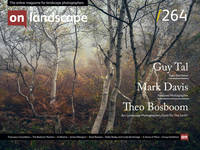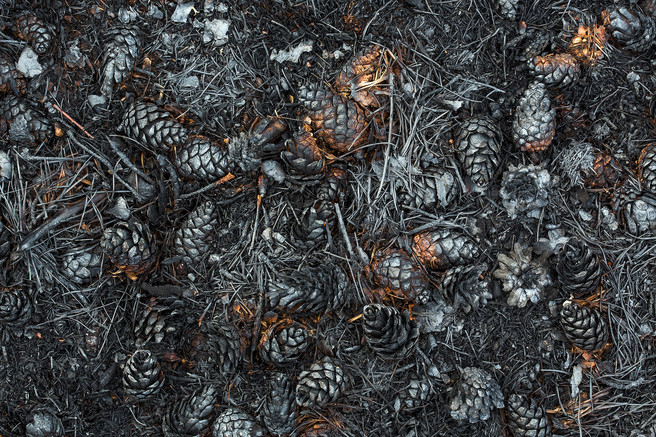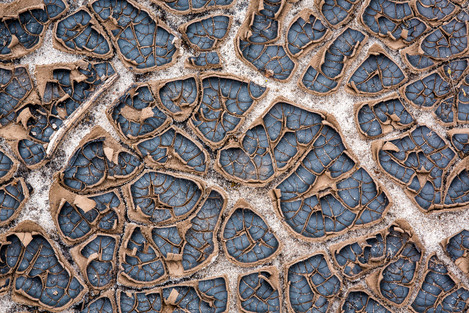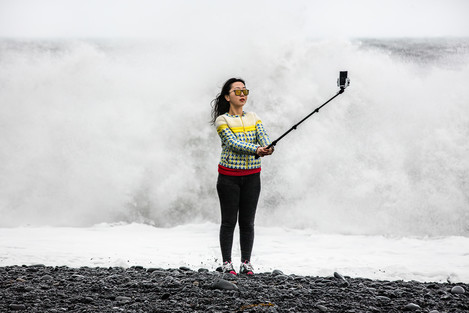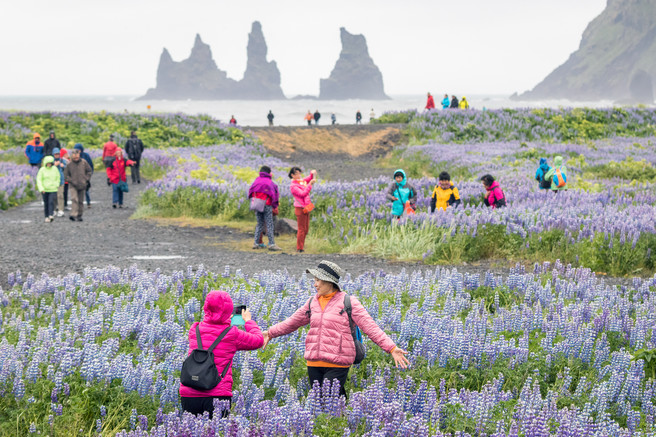Are landscape photographers good for the earth?

Theo Bosboom
Theo Bosboom is a passionate photographer from the Netherlands, specialising in nature and landscapes. In 2013, he turned his back on a successful legal career to pursue his dream of being a fulltime professional photographer. He is regarded as a creative photographer with a strong eye for detail and composition and always trying to find fresh perspectives.
When I started as a professional landscape photographer almost 10 years ago, I had little doubt about my positive impact on the earth. After all, as a landscape photographer, you are close to nature, you are often in nature, and with your photos and your stories, you are an ambassador for nature. You show other people how beautiful, important and vulnerable nature is, thereby creating awareness and desired behaviour. The fact that in order to take these photos, some negative effects would occur from time to time (e.g. flying), I was happy to accept. After all, the balance was clearly positive.
Now, a little older and perhaps a little wiser, I have a more nuanced opinion. Are we reaching the right people as landscape photographers? In a cynical mood, you could say that the audience of landscape photographers consists largely of other landscape photographers. And they are not so much called upon by your photos to protect the earth, but rather to fly to the same wonderful places to take photos of them too. Of course, this is certainly not the whole story, but it is certainly an effect that we have to face up to.
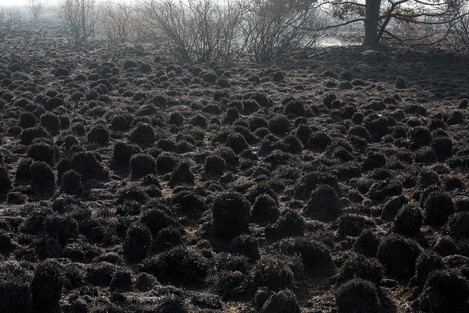
National park De Hoge Veluwe, the Netherlands, after a large wildfire in 2014. The amount of wildfires has grown considerably in recent years.
I still think and hope that, on balance, I can have a positive influence with my photos.
In this article, I will therefore give some tips on how to reduce your negative impact on the environment. In addition, I will look at some ways of increasing your positive impact. As there is already enough general literature on how you as a human being can reduce your carbon footprint, in this piece, I will focus on the special aspects related to landscape photography.
This article is not meant to be an indictment, and I certainly do not want to deny anyone their passion or make their work impossible. I am not in that position at all, as I am far from perfect and still have some green steps to make. This article is, therefore, also a report of my own struggles and first steps on this path. Above all, I hope that we will deal with this topic more consciously and perhaps talk about it more often. In my opinion, there is quite a lot of attention on how to behave as a photographer in the field (for example, through the Nature First principles), but important themes such as the impact of air travel, regularly buying new equipment, and the impact of (international) workshops are rarely discussed.
Tip 1: Fly less!
The first tip is both obvious and uncomfortable at the same time: fly less! The CO2 emissions of air travel are significant, and therefore flying is a major contributor to global warming.
You may question if I am the right person to give this advice, as I fly several times a year to Iceland and other destinations for my own photo projects and my workshops. I still feel that this is occasionally justified for my work, so I do not go as far as photographers who have decided not to fly at all.
But I have been working on how to limit flying for some time. For example, a few years ago - partly as a result of my frustration with the rise of mass tourism in Iceland (see my earlier article on this) - I decided to reduce my group trips to Iceland from 3 to 4 times a year to once a year. I have not replaced those trips with other trips either, although that is quite a drain financially.
You can also significantly reduce CO2 emissions by simply not going as far. Ask yourself if you really need to go to Patagonia or New Zealand. I decided a long time ago to stay in Europe for my photography and to limit intercontinental flights to once every 5 years at the most. That makes a big difference. The CO2 emission for a flight to Iceland from Amsterdam, for example, is five to six times lower than a flight to Patagonia. There are all kinds of online tools to calculate and compare emissions. Sometimes it feels like a loss that I can't go to destinations outside Europe, but you can't have everything, and this restriction makes me feel a little more comfortable with flying within Europe every now and then. Besides, it feels good to promote Europe with my photography and maybe encourage other European photographers to stay in Europe as well.
Of course, it is even better to stay closer to home and not fly at all. Many photographers have discovered their own backyard photographically during the many covid-19 lockdowns, and this has resulted in many interesting projects. It would be a pity if we all stopped doing that now that the borders are open again. In addition, it is perhaps good to know that you can make a name for yourself with interesting photos of your local patch at least as well as with photos of 'epic' places around the world. The latter has already been taken many times. To endorse this, I would like to mention that about half of the photos with which I have won a prize in prestigious photo competitions such as Wildlife photographer of the year and European Wildlife photographer of the year were taken in my own country, the Netherlands, or in neighbouring Belgium, which is easily accessible without flying.
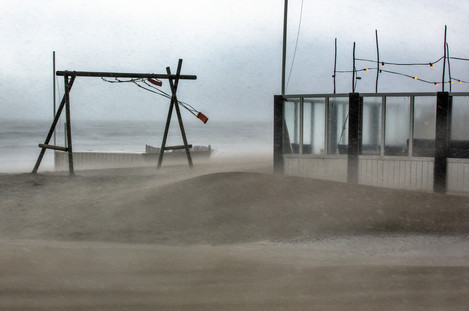
Storm in Noordwijk on the Dutch Northsea coast. In the last few years, the rains have become much more extreme in the Netherlands and many other countries in Europe.
Finally, I have decided that I will only accept a lecture at a photo festival once a year if I have to fly there. This has already resulted in several cancellations.
I think that the bottom line is that every landscape photographer needs to assess for himself how often he flies and how this can be reduced. Not flying at all seems to me to be unrealistic, but flying significantly less is definitely achievable.
By the way, you can compensate the CO2 emissions of your flights by planting trees. This often costs only a small amount of money. This ‘solution’ is contentious though and it should never be a licence to continue flying carefree. Read the article CARBON OFFSETS DO NOT WORK by Vicki Brown for a number of strong arguments against this practise.
Tip 2: Limit the use of the car
Let's stay with transport for a moment: limit your car kilometres, because they are also responsible for considerable CO2 emissions. This is also a tricky one. Public transport does not usually take you to all the desired places and certainly not at the times that are considered interesting for landscape photography. But again, think about it and see what you can do to reduce the CO2 emissions of your transport.
Carpooling is an obvious way to go if you are shooting together or going to a photo festival. And if you limit your speed, this can lead to 10 - 15% fewer emissions!
Electric driving is an important step towards reducing our impact and, although the environmental sums may not add up to positive results now, the future is definitely in that direction and needs the public demand to progress. However, for most of us, it is still financially unfeasible but one to keep an eye on.
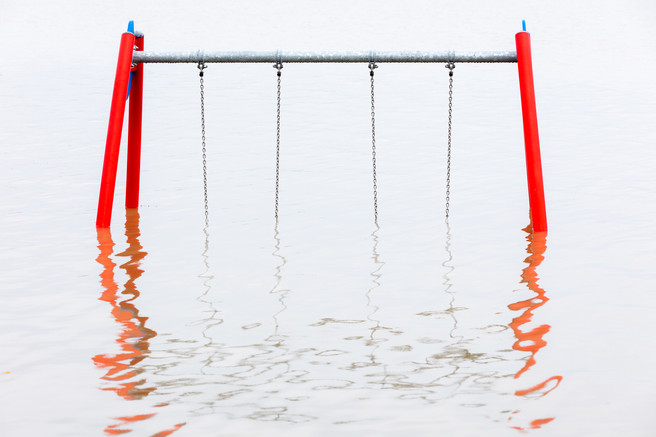
High water, the Netherlands. The main rivers in the Netherlands have flooded regularly in recent years.
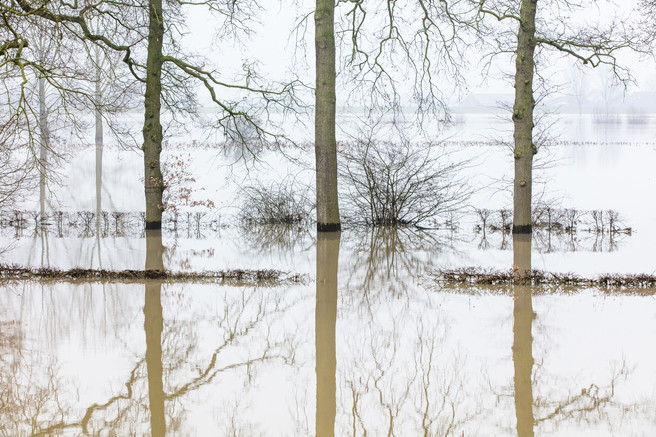
High water (II), the Netherlands. There is beauty in the flooded landscape, but it is scary at the same time.
Tip 3: Limit the negative impact of your organised trips and workshops
Many (semi) professional landscape photographers earn a substantial part of their income by organising photo trips and workshops. It is worth looking at how you can minimise the negative impact on the environment. Of course, the advice to fly less and to look for destinations closer to home that might be interesting for a photo trip also applies here. You could say that as an organiser you are also in a way responsible for the flights of your participants.
You can also try to ensure that the trip is as sustainable as possible locally.
Furthermore, a simple way to reduce the car kilometres associated with photo trips and workshops is to hold the preliminary meeting online. It is, of course, more fun to meet everyone live, but online is also fine, and you avoid that everyone has to travel for it.
Finally, I think that as a photographer/travel organiser you should always ask yourself whether it is such a good idea to do a certain workshop or trip and whether the impact on nature is not too great. For example, I stopped giving dragonfly and damselfly workshops some years ago because I felt that the impact of a group of people (even when limited to 4 or 5 people) in a fairly small place by the water was too great. And there are fantastic travel destinations that I will never go to with a group because I am afraid that too much damage will be done. This is all the more true as it is usually not just one trip, many photographers and organisations are likely to be inspired by what others offer!
Tip 4: Limit yourself in buying new equipment
We photographers love our gear, don’t we? But perhaps we sometimes go a bit overboard with this. Maybe not everyone realises that the production and transportation of all this equipment has a significant negative environmental impact.
I think many landscape photographers have a certain Fear of Missing Out if they do not use the latest camera or the latest lens. Try to curb this FOMO! Of course, it is nice to have good, state of the art equipment, but you really don't have to buy every new version of a lens or camera that is offered (although manufacturers would like you to believe otherwise).
It is probably needless to say that good pictures are usually due to the eye, creativity and skills of the photographer and not to the use of state-of-the-art equipment.
Tip 5: Be careful and diligent when photographing in nature
Be careful when photographing in nature and always let the interest of nature prevail over the interest to take a certain picture. I found it important to mention it, but will not elaborate on this point here. Nature First has already drawn up clear guidelines for this, which have been endorsed by many photographers.
Be reluctant to share locations, especially with fragile and unknown nature reserves. This advice is part of the Nature First principles, but I think it is important enough to mention it separately. In times of social media, you have to assume that sharing locations poses a real risk that many people will follow in your footsteps and want to go there too. So be aware of the risks and assess each time whether mentioning the location is harmful.
Tip 6: Do not participate in NFTs
Last year, everyone was talking about NFTs as a great new source of income for photographers. If you don't know what NFTs are, read Tim Parkin's introduction here in issue 247.
Not everyone seems aware of the fact that generating and also transferring NFTs costs tons of energy and has a significant negative impact on the environment. So, as a landscape photographer, you have to ask yourself if you want to make money this way. In any case, I have decided not to try it, although the prospect of getting a lot of money for some digital files also seemed attractive to me.
There is talk of more environmentally friendly alternatives, but it is not clear to me whether they have really caught on yet. In any case, the NFT hype seems to have passed its peak, which may make it easier to stay away from it.
Tip 7: See how you can increase your positive influence as a landscape photographer
As mentioned before, as a landscape photographer, there is a risk that your images will mainly reach fellow photographers. It is questionable whether you will make the world any greener by doing so. It is therefore worthwhile looking into whether you, as a photographer, can reach a different audience, for example, with lectures at other locations than photo clubs and with publications in other media than photo magazines. This will increase your chances of surprising and touching people in a positive way with your landscape photos and maybe make them more aware of the value of nature which, as a result, may lead to different choices and behaviour. Of course, such an influence is very difficult to measure, but that does not mean, in my opinion, that it is not worth trying.
In addition, see if you can use your images or your network for nature conservation purposes. Most of us have at least a few hundred followers and sometimes many thousands of followers on social media. For a number of years now, I have tried to share petitions or critical articles that I think are good with my followers, for instance, on Facebook or in my newsletters. The influence is again difficult to measure, but I do feel that it can make a small contribution.
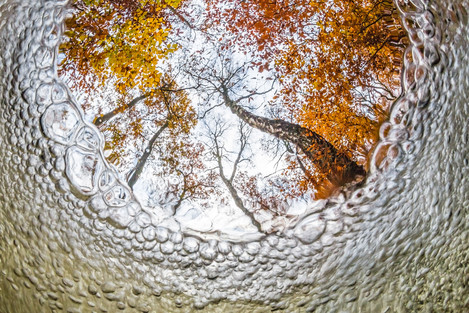
This is one of my most successful images, published frequently and runner up in the Creative Visions category of Wildlife photographer of the year. It was taken within an hour of my home.
Last year, together with a colleague (Johan van der Wielen), I made a series of photos available free of charge to magazine editors if they would like to draw attention to a petition against the laying of an underground power cable on Schiermonnikoog in the Dutch Wadden Sea region, one of the most unspoiled places in the Netherlands. This article was published on a number of widely read websites. In the end, the plan for the power cable was taken off the table. Of course, I cannot say that this would not have happened without our input, but I like to think that it did help a little.
Finally
There is a lot more to say on this subject. I thought it was especially important to write about it once and open the discussion this way. I am open to other suggestions and opinions!
Other relevant articles
-
- A question of responsibility- Does being an outdoor photographer inevitably lead to environmentalism?
- 7 Principles to Reduce the Individual & Collective Impact of Nature Photography on Wild Places
- Living Lightly in a Consumerist Industry - The balance between being well equipped and sustainable
- Roundtable Discussion on the Environment for Landscape Photographers
- The Trouble with Conservation Photography
- National park De Hoge Veluwe, the Netherlands, after a large wildfire in 2014. The amount of wildfires has grown considerably in recent years.
- Burnt pine cones, national park De Hoge Veluwe, the Netherlands.
- Very dry ground, national park Maasduinen, the Netherlands
- Storm in Noordwijk on the Dutch Northsea coast. The last years the rains have become much more extreme in the Netherlands and many other countries in Europe.
- High water, the Netherlands. The main rivers in the Netherlands have flooded regularly in recent years.
- High water (II), the Netherlands. There is beauty in the flooded landscape, but it is scary at the same time.
- Storm selfie, an image taken at the famous black beach near Vik, Iceland, a couple of years ago
- Tourists & flowers, Iceland
- This is one of my most successful images, published frequently and runner up in the Creative Visions category of Wildlife photographer of the year. It was taken within an hour of my home.

